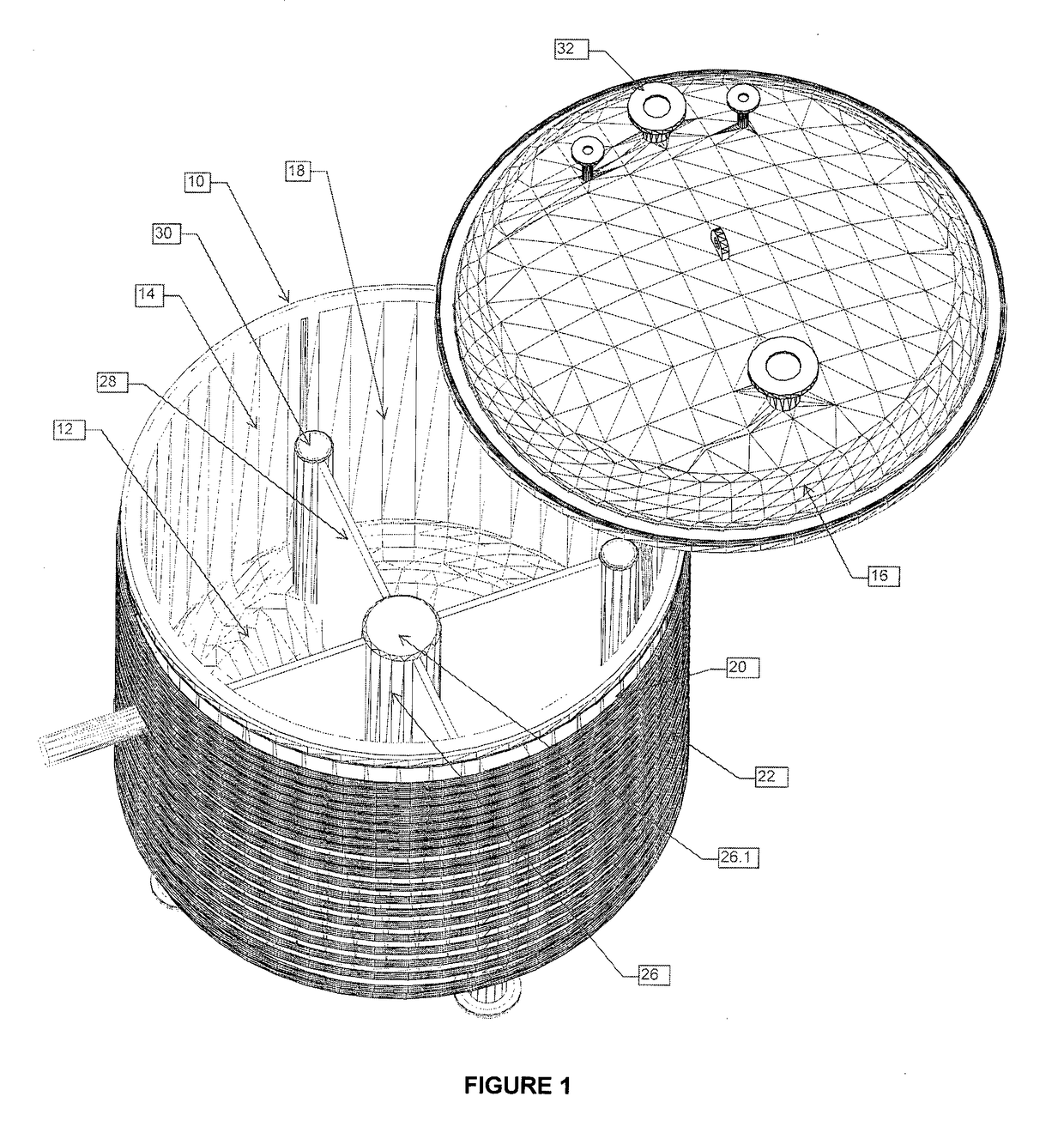Reactor vessel, system and method for removing and recovering volatilizing contaminants from contaminated materials
a technology of volatilizing contaminants and reactor vessels, which is applied in the direction of induction heating, induction heating apparatus, electrical equipment, etc., can solve the problems of affecting the economic benefits of the industry. , to achieve the effect of reducing the temperature requirements, increasing the relative volatility of key hydrocarbon components, and increasing the yield of recovered hydrocarbons
- Summary
- Abstract
- Description
- Claims
- Application Information
AI Technical Summary
Benefits of technology
Problems solved by technology
Method used
Image
Examples
Embodiment Construction
[0052]The reactor vessel of the invention will now further be described by way of non-limiting example only and with reference to the accompanying drawings in which—
[0053]FIG. 1 is a perspective view of a reactor vessel according to one embodiment of the invention, the reactor vessel being illustrated with its removable lid in a partially open position, and including a blind tube and four conducting plates;
[0054]FIG. 2 is a plan view from above of the reactor vessel of FIG. 1, with the lid removed; and
[0055]FIG. 3 is a cross-sectional side view of the reactor vessel of FIG. 1, with the lid in a closed position.
[0056]An insulated, magnetic, electrically conductive reactor vessel according to the invention is designated by reference numeral [10]. The reactor vessel [10] comprises a reactor base [12]; a cylindrical reactor wall [14] extending upright from the base [12]; and a removable lid [16] dimensioned to rest on the cylindrical reactor wall [14] for sealing the reactor vessel [10]...
PUM
| Property | Measurement | Unit |
|---|---|---|
| frequency | aaaaa | aaaaa |
| frequency | aaaaa | aaaaa |
| temperatures | aaaaa | aaaaa |
Abstract
Description
Claims
Application Information
 Login to View More
Login to View More - Generate Ideas
- Intellectual Property
- Life Sciences
- Materials
- Tech Scout
- Unparalleled Data Quality
- Higher Quality Content
- 60% Fewer Hallucinations
Browse by: Latest US Patents, China's latest patents, Technical Efficacy Thesaurus, Application Domain, Technology Topic, Popular Technical Reports.
© 2025 PatSnap. All rights reserved.Legal|Privacy policy|Modern Slavery Act Transparency Statement|Sitemap|About US| Contact US: help@patsnap.com



